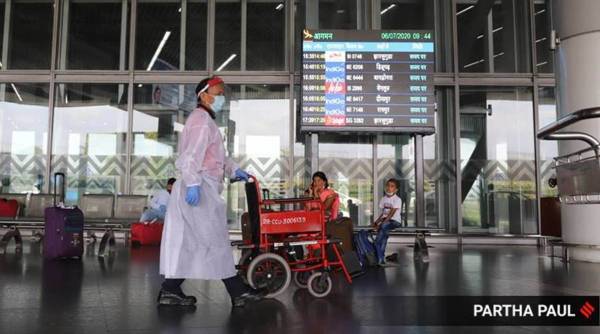 Commercial international flights have been suspended in the country since March last year owing to the coronavirus pandemic. (File Photo)
Commercial international flights have been suspended in the country since March last year owing to the coronavirus pandemic. (File Photo)
On Friday, the World Health Organization (WHO) classified a new variant of SARS-CoV-2, currently circulating in South Africa, as a ‘variant of concern’. It also named it Omicron.
The Network for Genomics Surveillance in South Africa (NGS-SA) had identified the variant on Monday. It had detected a group of related SARS-CoV-2 viruses, which belong to a lineage named B.1.1.529.
Early indications are that this variant is possibly even more transmissible than the highly infectious Delta variant, and that current vaccines may be less effective against it.
What we do know so far about Omicron?
New variants continue to emerge as SARS-CoV-2 spreads, and the significance of each mutation becomes known after a period of time. But health authorities worldwide need to keep a constant watch to identify which ones are more important than others. It was as part of such an exercise that the NGS-SA detected B.1.1.529.
From what is known currently, B.1.1.529 has multiple spike protein mutations, and preliminary analysis suggests it is highly infectious. South Africa has reported a four-fold increase in new cases over the last two weeks, coinciding with the emergence of B.1.1.529.
On Thursday, the NGS-SA said B.1.1.529 has rapidly increased in Gauteng province, which includes Johannesburg and Pretoria, and may already be present in most provinces….



























































